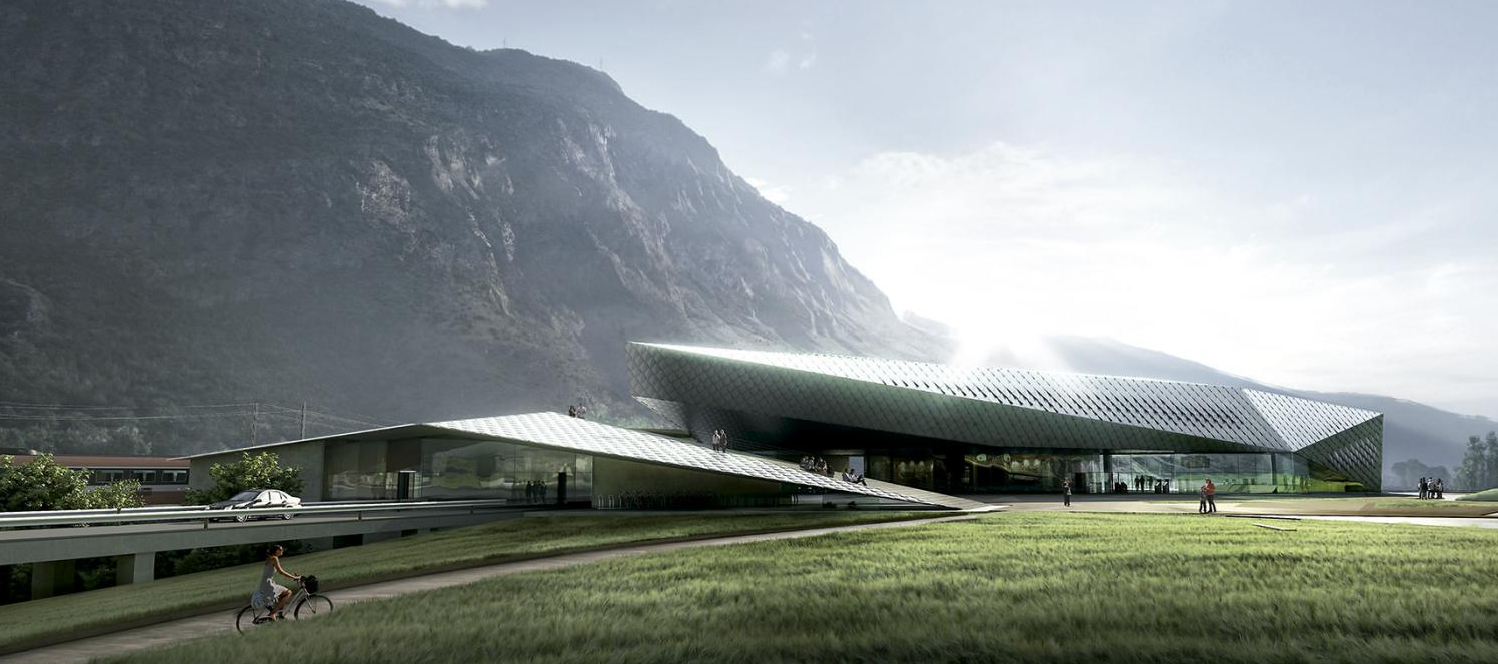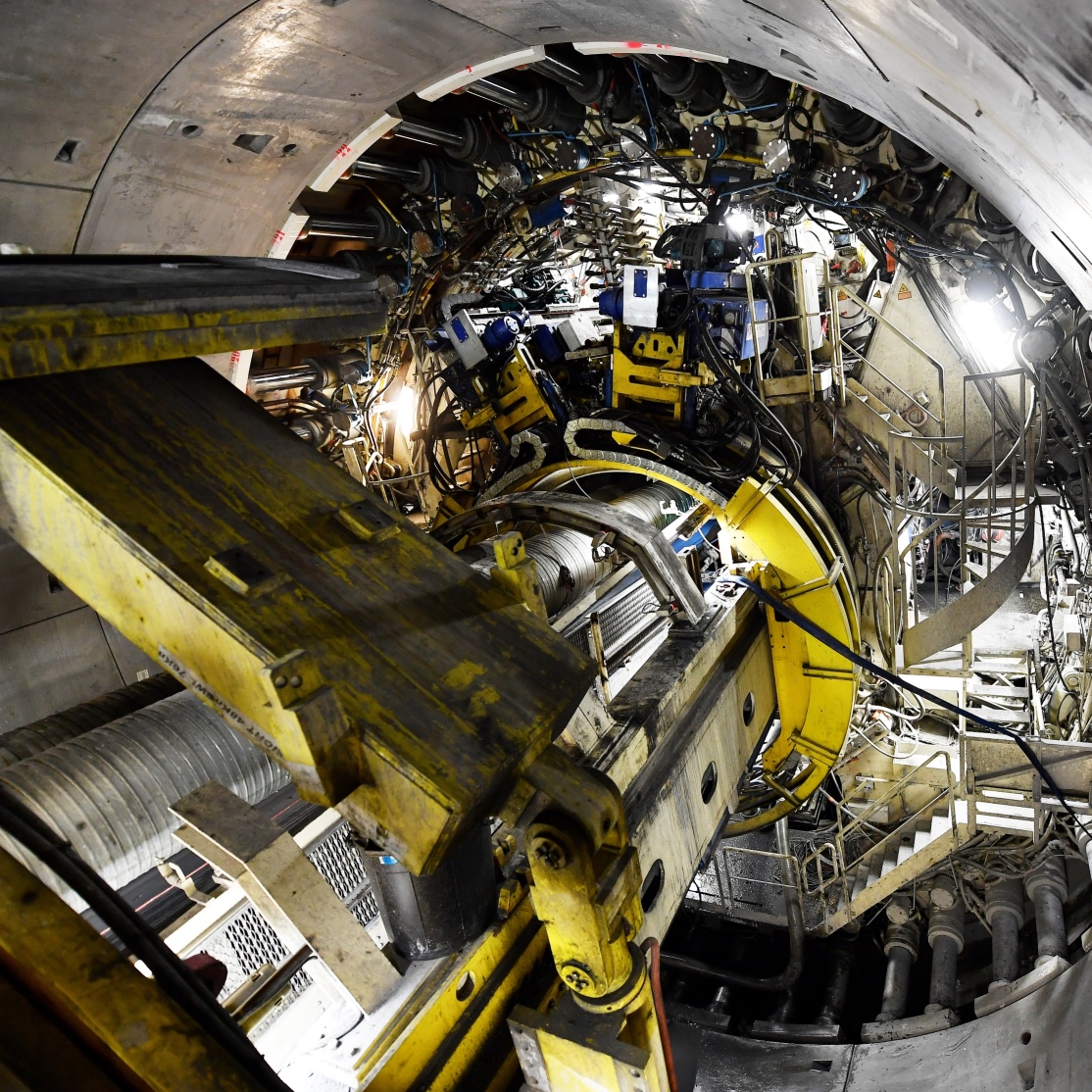The official TELT website has changed: from August 2022, telt-sas.com becomes telt.eu. If you have any problems or need help, please contact us.
The official TELT website has changed: from August 2022, telt-sas.com becomes telt.eu. If you have any problems or need help, please contact us.
Home | The single construction site


The works are divided into 12 operational construction sites between France and Italy
Underground Works
To build the 57.5-km-long Mont Cenis base tunnel we are excavating under the Alps between France and Italy from different access points available thanks to the slopes previously excavated. Underground, the works are carried out using the mechanised method, using big Tunnel Boring Machines (TBM) or the traditional method, i.e. explosives or pneumatic drills, in the most delicate geological parts.
Above Ground Works
In addition to the base tunnel, TELT is in charge of building the connections with the new international stations of Saint-Jean-de-Maurienne and Susa, and the one with the existing line. This is why different above ground construction sites are planned in the Susa and Maurienne valleys.
The reuse of excavated materials
Part of the materials extracted during the works will be processed and reused in tunnel construction, such as for segments and railway embankments. The portion of rocks which cannot be reused in the works due to its mechanical and chemical characteristics will be used for rehabilitation and renaturalisation of selected sites in the area.
The construction sites for the Lyon-Turin base tunnel are operational in the two countries. The base tunnel, the main work for the cross-border section, is a complex infrastructure, consisting of two parallel, 57.5-km-long tubes to accommodate the tracks for the passage of freight and passenger trains, 204 safety bypasses and 4 slopes.
In addition to the underground work, TELT manages and coordinates the above ground sites, both in Italy and France, which ensure the connection to the respective national lines through the new international stations.
The construction sites are checked around the clock via a series of internal and external monitoring stations that measure 135 different environmental parameters (water, dust, asbestos, radon, etc.). These measurements are carried out under the supervision of national control bodies, to ensure the respect of the territory and the health of workers and citizens.
The access adits are three on the French side – Villarodin-Bourget/Modane, La Praz and Saint-Martin-La-Porte – and one is in Chiomonte on the Italian side. In total, the access adits constitute approximately 18 km of tunnels that will be used both for the construction and maintenance of the base tunnel and as emergency exits.
More specifically, the slopes have represented 4 different faces to ascertain and evaluate the main geological obstacles and to develop the most efficient solutions for the construction of the base tunnel: the reuse of excavated materials in the Villarodin-Bourget/Modane construction site; water management in tunnels in La Praz; rock convergence in Saint-Martin-la-Porte; and mechanised excavation in Chiomonte.
In this phase, the slopes serve as access routes to the base tunnel construction site. Once the tunnel is operational, they will serve as maintenance access tunnels and as safety accesses.
An important part of TELT’s environmental policy is the focus on the use of raw materials, their reuse to promote a circular economy and less waste of community resources, and responsible production methods to reduce carbon emissions. All this according to the principle of life-cycle thinking.
The project for the cross-border section of the Lyon-Turin line includes two international stations, located each a few kilometres outside the base tunnel. In Saint-Jean-de-Maurienne, France, and in Susa, Italy, the two newly designed facilities will be able to handle multimodal exchanges (the switch from one transportation system to another, for example from road to rail), to accommodate varying passenger profiles, each with specific service requirements (parking spaces for various means of transportation, such as cars, bicycles, buses), and to handle the connection with local transport networks in the two reference regions.
Thanks to the international stations, the Olympic mountains of the Susa Valley and the French Alps’ “Domain Skiable” ski area will be located on the TEN-T primary network, just a few hours away from most European capitals.
The projects are designed to blend in as much as possible with the surrounding natural and built-up landscape and to constitute the interchange nodes between the international line and the local networks.


Mechanised excavation using TBMs
TBMs – Tunnel Boring Machines are impressive machines, custom-built to dig underground quickly and safely. The cutter is configured as a “travelling industry”: it allows to mechanise and automate all the excavation, clearing, and soil transport activities, thus reducing to a minimum both the work time and the number of operators that have to be present. The cutters on the cutter head break the rock without abrading it, thus limiting the formation of dust and therefore its dispersion in the environment.
Traditional excavation using explosives
This is used in the more complex mountain sections. This technique involves making holes in the rock wall which are then filled with explosives and subsequently ignited. After the debris are removed, the front is consolidated with beams and sprayed concrete. In some cases, the shell can be reinforced with steel bars.
Traditional excavation using pneumatic drills
Where the rock is less resistant and explosives cannot be used, progress is made using pneumatic drills, with the excavation again being consolidated with beams and concrete.
BIM’s role is to determine, on the one hand, the integration of data and data processing in all phases that constitute the complete life cycle of a project from feasibility to construction and operation, and, on the other hand, communication and cooperation among the various figures involved in a project.
The coordination and updating of information (architectural, structural and plant design, characteristics and properties of materials, components and systems, planning of construction phases, timing and execution costs, maintenance works), allows to monitor the overall process, helping to speed up the construction process, making it cheaper, more reliable and less prone to errors or risks, also ensuring greater effectiveness of management choices.
TELT conceives its construction sites as spaces for information, sharing and immersion in the project. All construction sites, both in Italy and France, are designed as places of knowledge about the project, the technologies used for excavation and environmental protection, art and the excellence of the territories. The work areas are physically included and used in explaining the project, its history and context.
By continuing to use the site, you agree to the use of cookies | Continuando ad utilizzare il sito, accetti l'uso di cookie | En continuant à utiliser le site, vous acceptez l'utilisation de cookies | PLUS
The cookie settings on this website are set to "allow cookies" to give you the best browsing experience possible. If you continue to use this website without changing your cookie settings or you click "Accept" below then you are consenting to this.